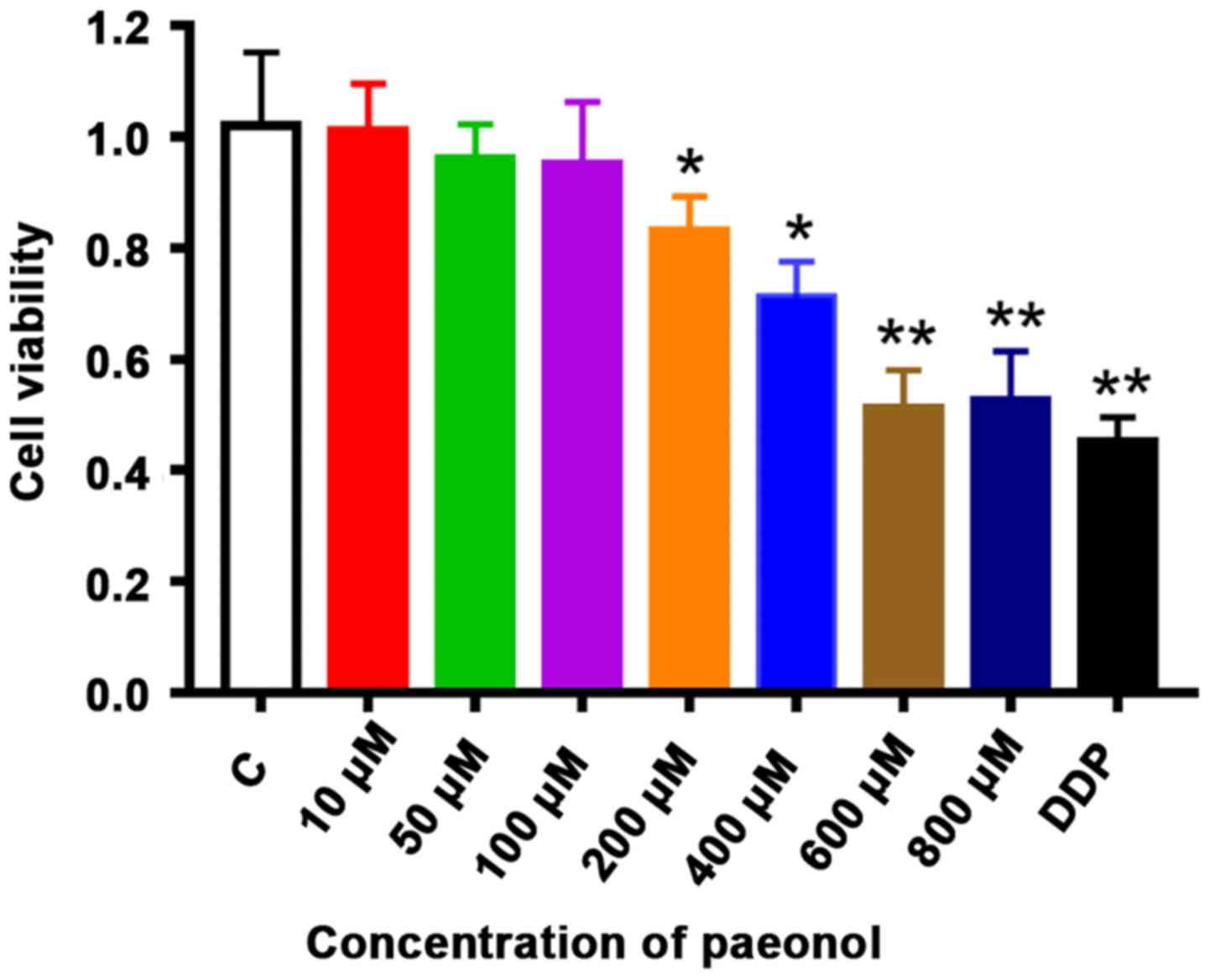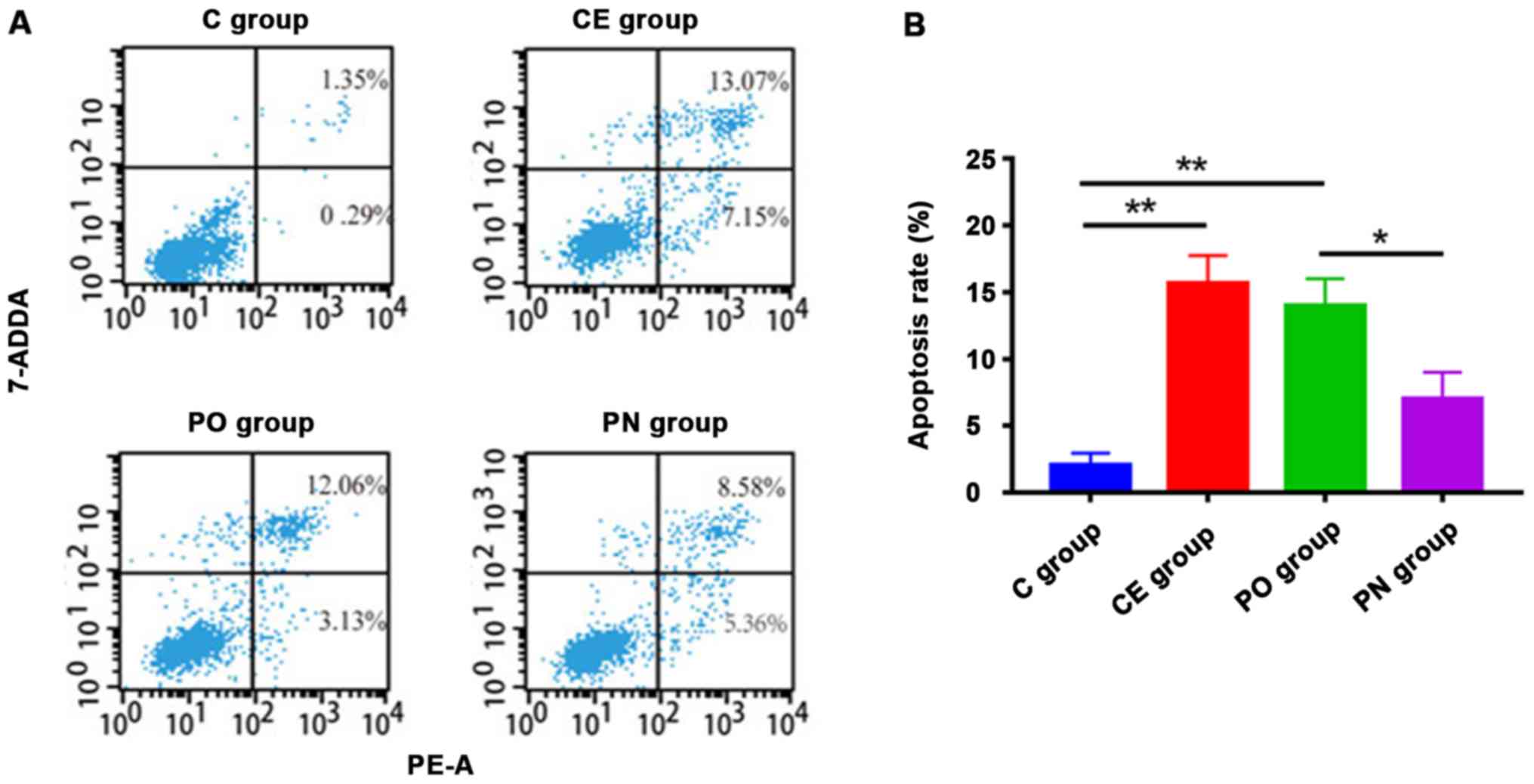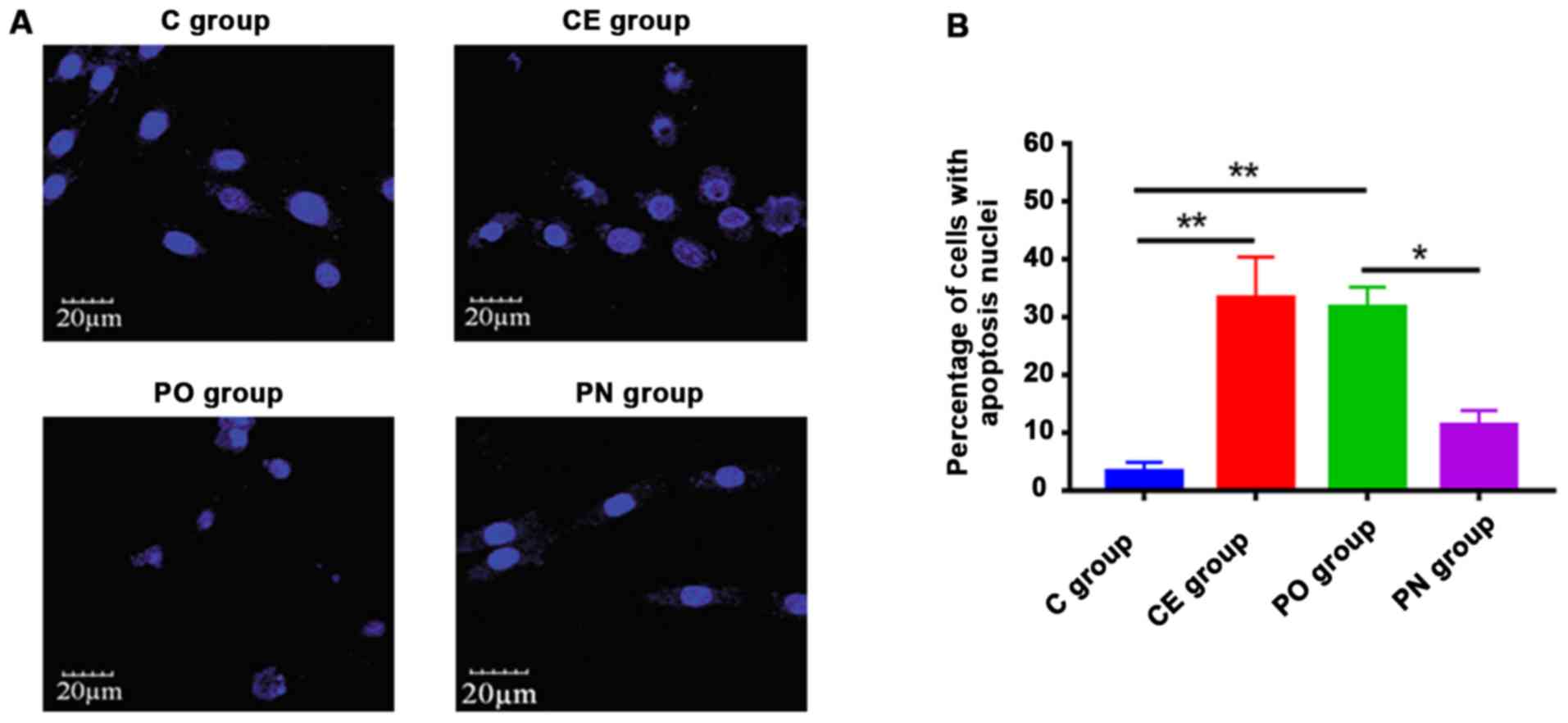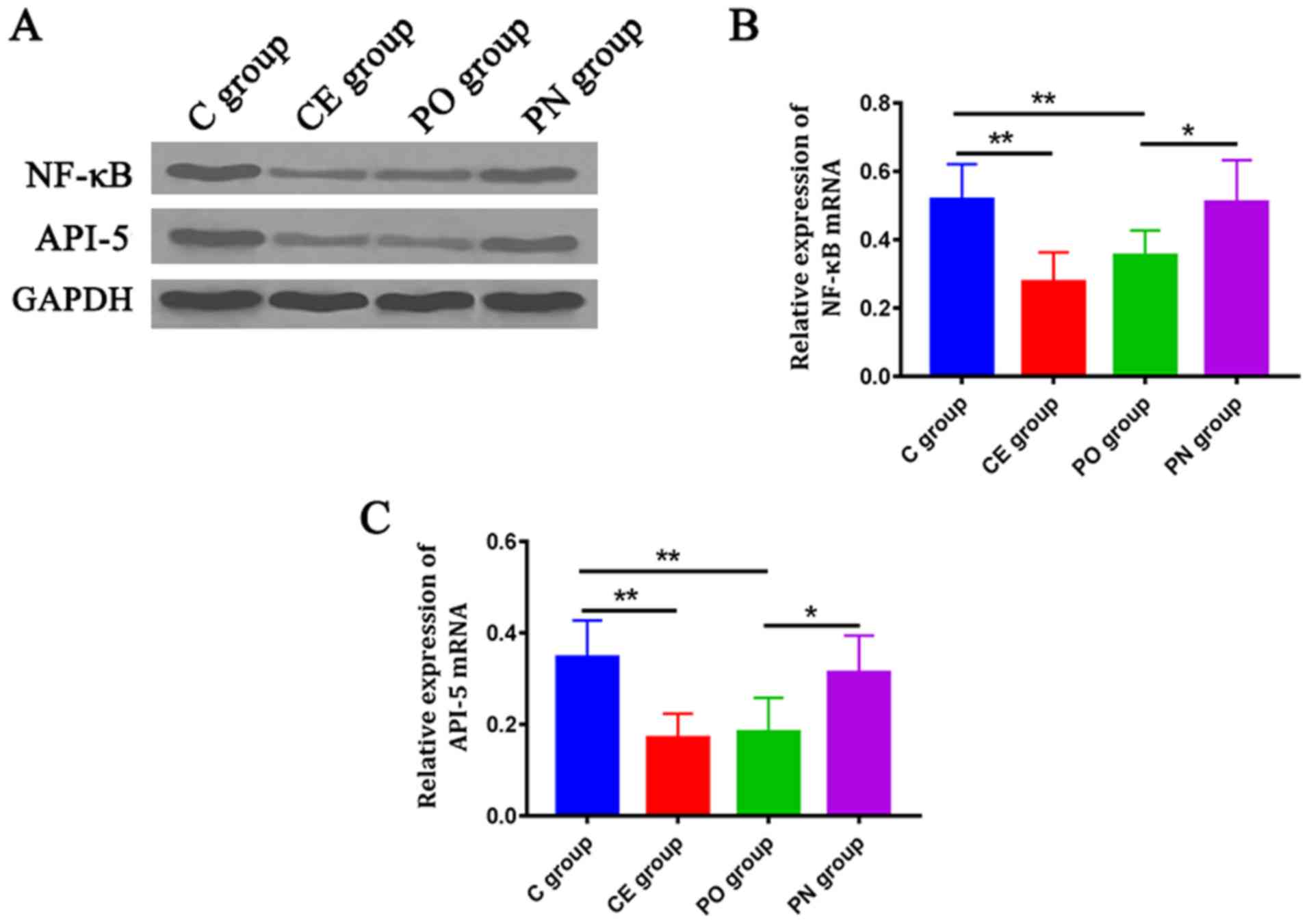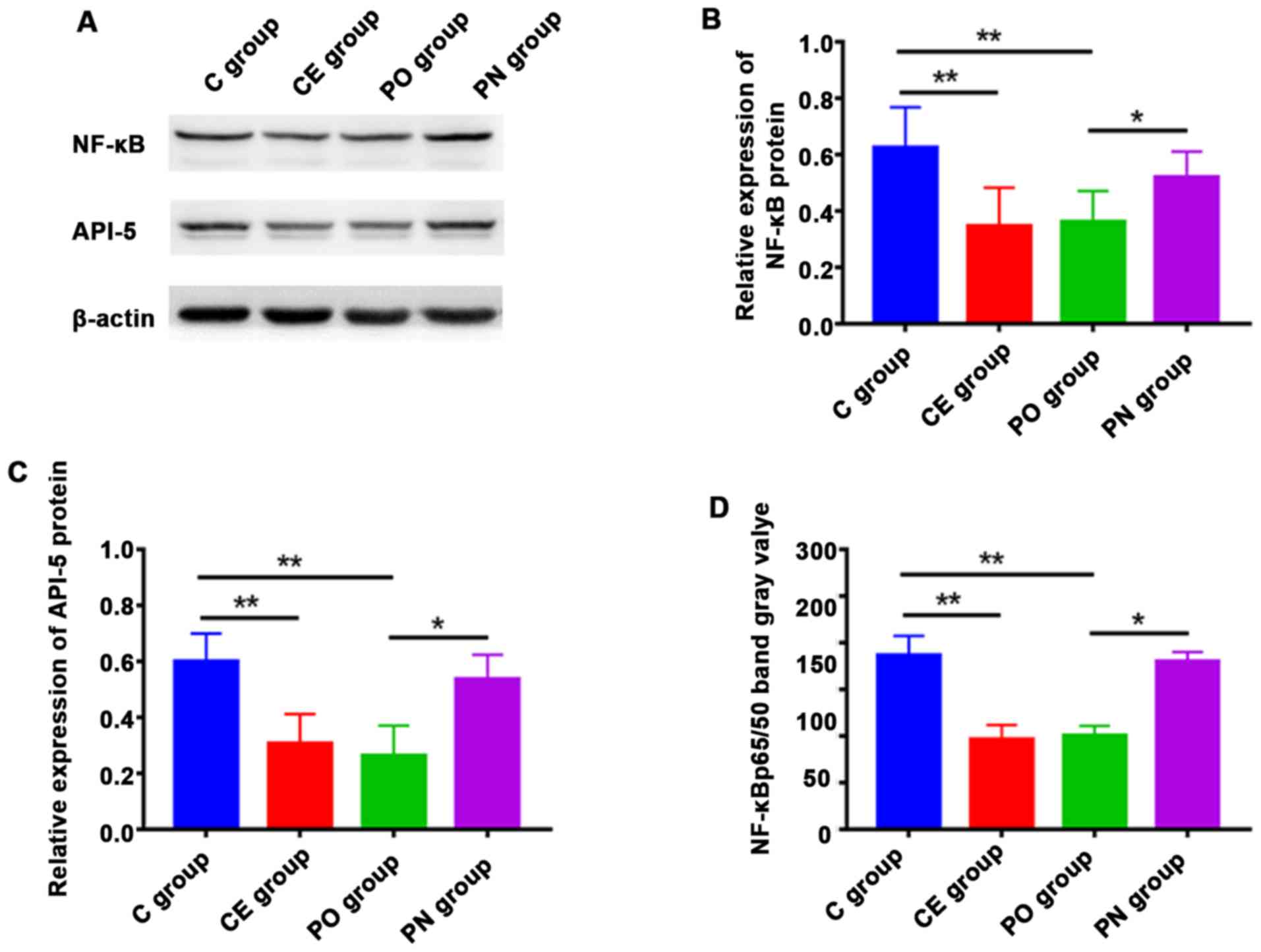|
1
|
Korean Liver Cancer Study Group (KLCSG);
National Cancer Center, Korea (NCC), . 2014 Korean Liver Cancer
Study Group-National Cancer Center Korea practice guideline for the
management of hepatocellular carcinoma. Korean J Radiol.
16:465–522. 2015. View Article : Google Scholar : PubMed/NCBI
|
|
2
|
Sun Z, Chen T, Thorgeirsson SS, Zhan Q,
Chen J, Park JH, Lu P, Hsia CC, Wang N, Xu L, et al: Dramatic
reduction of liver cancer incidence in young adults: 28 year
follow-up of etiological interventions in an endemic area of China.
Carcinogenesis. 34:1800–1805. 2013. View Article : Google Scholar : PubMed/NCBI
|
|
3
|
Berretta M, Stanzione B, Di Francia R and
Tirelli U: The expression of PD-L1 APE1 and P53 in hepatocellular
carcinoma and its relationship to clinical pathology. Eur Rev Med
Pharmacol Sci. 19:4207–4209. 2015.PubMed/NCBI
|
|
4
|
Chang ET, Yang J, Alfaro-Velcamp T, So SK,
Glaser SL and Gomez SL: Disparities in liver cancer incidence by
nativity, acculturation, and socioeconomic status in California
Hispanics and Asians. Cancer Epidemiol Biomarkers Prev.
19:3106–3118. 2010. View Article : Google Scholar : PubMed/NCBI
|
|
5
|
Moris D, Vernadakis S, Papalampros A,
Petrou A, Dimitroulis D, Spartalis E, Felekouras E and Fung JJ: The
effect of Guidelines in surgical decision making: The paradigm of
hepatocellular carcinoma. J BUON. 21:1332–1336. 2016.PubMed/NCBI
|
|
6
|
Barbier-Torres L, Delgado TC,
García-Rodríguez JL, Zubiete-Franco I, Fernández-Ramos D, Buqué X,
Cano A, Gutiérrez-de Juan V, Fernández-Domínguez I, et al:
Stabilization of LKB1 and Akt by neddylation regulates energy
metabolism in liver cancer. Oncotarget. 6:2509–2523. 2015.
View Article : Google Scholar : PubMed/NCBI
|
|
7
|
Yang Y, Wu QJ, Xie L, Chow WH, Rothman N,
Li HL, Gao YT, Zheng W, Shu XO and Xiang YB: Prospective cohort
studies of association between family history of liver cancer and
risk of liver cancer. Int J Cancer. 135:1605–1614. 2014. View Article : Google Scholar : PubMed/NCBI
|
|
8
|
Li SS, Li GF, Liu L, Jiang X, Zhang B, Liu
ZG, Li XL, Weng LD, Zuo T and Liu Q: Evaluation of paeonol
skin-target delivery from its microsponge formulation: In vitro
skin permeation and in vivo microdialysis. PLoS One. 8:e798812013.
View Article : Google Scholar : PubMed/NCBI
|
|
9
|
Ye JM, Deng T and Zhang JB: Influence of
paeonol on expression of COX-2 and p27 in HT-29 cells. World J
Gastroenterol. 15:4410–4414. 2009. View Article : Google Scholar : PubMed/NCBI
|
|
10
|
Yang Q, Wang S, Xie Y, Wang J, Li H, Zhou
X and Liu W: Effect of salvianolic acid B and paeonol on blood
lipid metabolism and hemorrheology in myocardial ischemia rabbits
induced by pituitruin. Int J Mol Sci. 11:3696–3704. 2010.
View Article : Google Scholar : PubMed/NCBI
|
|
11
|
Koci L, Chlebova K, Hyzdalova M, Hofmanova
J, Jira M, Kysela P, Kozubik A, Kala Z and Krejci P: Apoptosis
inhibitor 5 (API-5; AAC-11; FIF) is upregulated in human carcinomas
in vivo. Oncol Lett. 3:913–916. 2012.PubMed/NCBI
|
|
12
|
Chen X and Calvisi DF: Hydrodynamic
transfection for generation of novel mouse models for liver cancer
research. Am J Pathol. 184:912–923. 2014. View Article : Google Scholar : PubMed/NCBI
|
|
13
|
Horng CT, Shieh PC, Tan TW, Yang WH and
Tang CH: Paeonol suppresses chondrosarcoma metastasis through
up-regulation of miR-141 by modulating PKCδ and c-Src signaling
pathway. Int J Mol Sci. 15:11760–11772. 2014. View Article : Google Scholar : PubMed/NCBI
|
|
14
|
Longo DM, Selimkhanov J, Kearns JD, Hasty
J, Hoffmann A and Tsimring LS: Dual delayed feedback provides
sensitivity and robustness to the NF-κB signaling module. PLoS
Comput Biol. 9:e10031122013. View Article : Google Scholar : PubMed/NCBI
|
|
15
|
Pekow J, Meckel K, Dougherty U, Butun F,
Mustafi R, Lim J, Crofton C, Chen X, Joseph L and Bissonnette M:
Tumor suppressors miR-143 and miR-145 and predicted target proteins
API5, ERK5, K-RAS, and IRS-1 are differentially expressed in
proximal and distal colon. Am J Physiol Gastrointest Liver Physiol.
308:G179–G187. 2015. View Article : Google Scholar : PubMed/NCBI
|
|
16
|
Baxter PA, Lin Q, Mao H, Kogiso M, Zhao X,
Liu Z, Huang Y, Voicu H, Gurusiddappa S, Su JM, et al: Silencing
BMI1 eliminates tumor formation of pediatric glioma
CD133+ cells not by affecting known targets but by
down-regulating a novel set of core genes. Acta Neuropathol Commun.
2:1602014. View Article : Google Scholar : PubMed/NCBI
|
|
17
|
Li H, Xie YH, Yang Q, Wang SW, Zhang BL,
Wang JB, Cao W, Bi LL, Sun JY, Miao S, et al: Cardioprotective
effect of paeonol and danshensu combination on
isoproterenol-induced myocardial injury in rats. PLoS One.
7:e488722012. View Article : Google Scholar : PubMed/NCBI
|
|
18
|
Musselman CA and Kutateladze TG: Methyl
fingerprinting of the nucleosome reveals the molecular mechanism of
high-mobility group nucleosomal-2 (HMGN2) association. Proc Natl
Acad Sci USA. 108:12189–12190. 2011. View Article : Google Scholar : PubMed/NCBI
|
|
19
|
Hämäläinen M, Nieminen R, Vuorela P,
Heinonen M and Moilanen E: Anti-inflammatory effects of flavonoids:
Genistein, kaempferol, quercetin, and daidzein inhibit STAT-1 and
NF-kappaB activations, whereas flavone, isorhamnetin, naringenin,
and pelargonidin inhibit only NF-kappaB activation along with their
inhibitory effect on iNOS expression and NO production in activated
macrophages. Mediators Inflamm. 2007:456732007. View Article : Google Scholar : PubMed/NCBI
|
|
20
|
Szukiewicz D, Wojciechowska M, Bilska A,
Stangret A, Szewczyk G, Mittal TK, Watroba M and Kochanowski J:
Aspirin action in endothelial cells: Different patterns of response
between chemokine CX3CL1/CX3CR1 and TNF-alpha/TNFR1 signaling
pathways. Cardiovasc Drugs Ther. 29:219–229. 2015. View Article : Google Scholar : PubMed/NCBI
|















